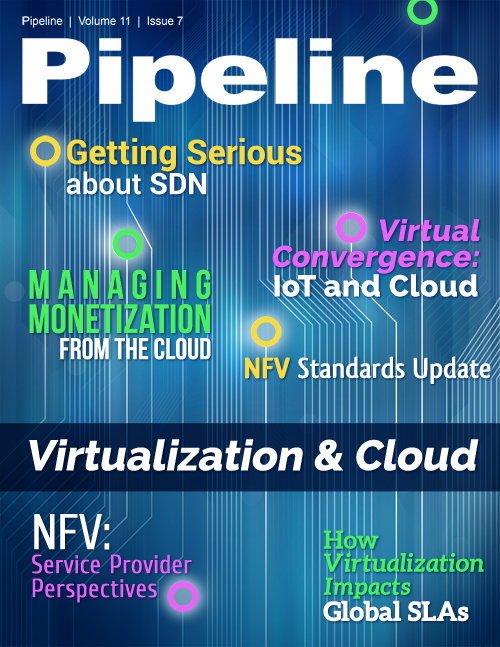The Impact of Virtualization on Global SLAs
Impact on NFV
Bob Lynch, vice president of software, Overture Networks, wrote an illuminating blog post earlier this year that outlined the challenges NFV brings to service assurance. "The end points (i.e. virtual port) of the virtual network are not exposed to the physical world. The cloud environment presents an interesting challenge in that today’s physical NIDs do not seamlessly fit into the virtual networks operating in the cloud. The CSP could measure data center to data center performance, but this does not provide the expected end-to-end view. A new solution is required." This issue is illustrated in figure 3 below.

Figure 3: Service Assurance Gaps in NFV, Courtesy of Overture Networks
According to a survey of service providers conducted by Infonetics Research, downstream bandwidth is the top-ranked service-level agreement (SLA) metric, rated very important by 92% of operators surveyed, followed by jitter, latency, and upstream bandwidth. To deliver service assurance in an NFV deployment, the need for a virtual performance monitor is required. Several vendors in the space offer a virtual performance monitoring solution that give customers visibility into NFV, including Overture Networks.
NTT
Global connectivity providers have a difficult task. They must guarantee uptime and provide verification that packet loss does not exceed agreed-upon levels. NTT Communications puts their capabilities in writing and displays the service metrics for service providers to view. The company provides one of the most aggressive Service Level Agreements (SLA) in the industry. These SLAs provide certain rights and remedies regarding the availability and performance of the NTT Com Global IP Network.
NTT guarantees that:
-
The NTT Com Global IP Network is free of Network Outages 100% of the time.
-
Latency will not exceed 50 milliseconds for the North American Network, 90 milliseconds for the Trans-Atlantic Network and 130 milliseconds or less for the Trans-Pacific Network.
-
Packet Loss will not exceed 0.1%.
-
Average jitter will not exceed 250 microseconds and will not exceed 10 milliseconds more than 0.1% of the time.
The company goes into detail for each region; but, in all regions, it guarantees 100% uptime.





















